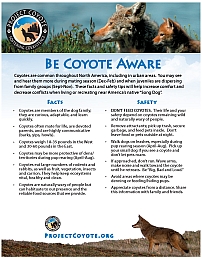[From SFPUC]
Provide Your Input Online for the Yosemite Creek Daylighting Project 
Thank you to those who were able to attend our Community Open House on October 2, 2013 and helped us identify the community’s priorities for daylighting Yosemite Creek near McLaren Park and the Louis Sutter Playground. We enjoyed meeting all of you from the neighborhood and gathering your feedback. If you weren’t able to make it to the community open house or were unable to finish the survey, you can still provide input online through the end of the month. Take the survey here today. It takes just a few minutes to learn about the project, give us your input, and contribute to the greening of San Francisco.
Discover Your Urban Watershed Web Seminar – Thursday, October 24, 2013
Mark your calendar for the first in the Discover Your Urban Watershed webinar series. Learn about SFPUC’s Sewer System Improvement Program and the role of the Urban Watershed Assessment planning process in this program. This webinar will focus on current conditions in San Francisco’s Islais, Sunnydale, and Yosemite watersheds. Join in and learn how you may get involved. The webinar will be held on October 24, 2013 from 12:00 pm – 1:00 pm. Please sign-up here.
SF Watersheds Interactive Workshop
The SFPUC is excited to announce an interactive workshop on Saturday, November 16 from 10:00am – 1:30pm at the Southeast Community Facility to help plan for necessary upgrades to San Francisco’s combined sewer system. We especially want to make sure that folks from the southern and eastern sections of the City are represented.
This interactive workshop will take the form of a participatory planning game and focus on developing infrastructure solutions to sewer system challenges in three of San Francisco’s urban watersheds: Islais Creek, Yosemite, and Sunnydale.
During the workshop participants will learn about their watersheds and use grey infrastructure game pieces (pipes) and green infrastructure game pieces (permeable pavement, rain gardens, and green roofs) to solve challenges specific to each watershed. Your input will contribute to the SFPUC’s Urban Watershed Assessment and the next 20 years of green and grey infrastructure upgrades in San Francisco’s neighborhoods.
Help us plan for healthy urban watersheds. Click here for more information and to RSVP. Please note that space is limited and you must RSVP in advance. Lunch will be provided.
If you cannot make it on November 16, there are other ways to get involved. Also, please feel free to pass this along or suggest others who might be interested. We would like at least one person from your organization—and the more the better!








 3 likes
3 likes
 Tom explains, “the ticks I found on myself have been identified as
Tom explains, “the ticks I found on myself have been identified as 